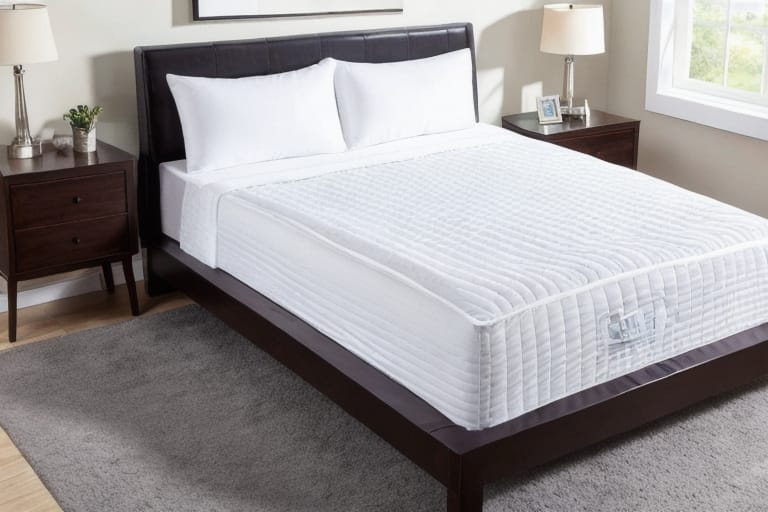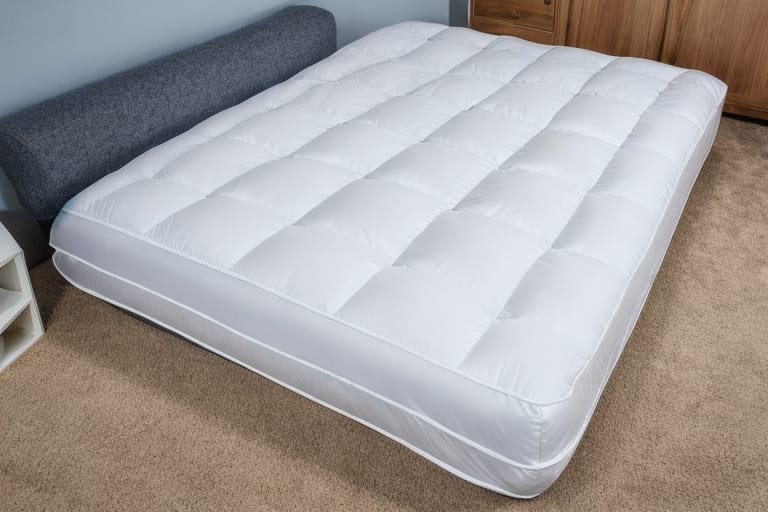When it comes to comforters and bedding, one common question is: Is down bedding hot? For hot sleepers, the idea of bundling up under a fluffy down comforter may seem far too warm and hot. But Down actually offers exceptional breathability and *temperature regulation if you choose the right options.
This beginner’s guide will explore whether down bedding sleeps hot, along with advice for hot sleepers on finding a comforter that offers both softness and cooling comfort. We’ll compare down-to-down alternative comforters, look at important factors like fill power and construction, and provide tips for care and maintenance.
What Makes Bedding Feel Hot
Several key factors affect whether bedding traps heat and leads to overheating:
- Fill Material – Feathers, down, and synthetics all have different insulation properties.
- Fill Power – Higher fill power down is more breathable.
- Construction – Tightly-woven fabrics and tight box construction reduce airflow.
- Moisture-wicking – Materials and fabrics impact moisture control.
- Fabric Type – Breathable fabrics like cotton and bamboo feel cooler.
Is Down or Down Alternative Better for Hot Sleepers?
Down comes from waterfowl like ducks and geese and is highly breathable. The3D cluster structure creates lots of air space for ventilation. It also compresses well to provide warmth without heaviness.
Down alternative synthetic fills are cheaper but tend to retain more body heat. They can also feel heavier.
For hot sleepers, high fill power down paired with breathable outer fabrics offers the best combination of lightness, loft, and breathability.
Choosing the Right Down Comforter Shell Fabric
The outer fabric or shell of the comforter impacts temperature regulation. Cotton and bamboo fabrics offer exceptional breathability:
Cotton
- Soft, breathable, moisture-wicking
- Allows air circulation to keep sleep space cooler
- Natural fiber lets body heat dissipate
Bamboo
- Super soft with moisture-wicking properties
- Breathable and thermoregulating
- Stays cooler than cotton

Finding the Best Construction for Cooler Sleep
Construction plays a key role in comforter breathability. Baffle box comforters have fabric walls that separate fill into sections, allowing better airflow.
Sewn-through comforters often feel warmer since fill is sewn into channels with no breathability through stitching:
Caring for Down Bedding
With proper care and maintenance, a quality down comforter can last over a decade.
- Regular cleaning – Wash every 6-12 months according to manufacturer instructions
- Airing out – Air out comforter on sunny days 2-3 times per year
- Proper storage – Store off floor in the breathable bag during summer
Following these best practices preserves insulation, reduces dust and allergens, and prevents excess moisture from leading to mold or mildew.
Finding the Right Balance of Cooling Comfort
Ultimately the “best” comforter combines high-quality materials with the right properties for your needs. Hot sleepers should prioritize breathable down with high fill power and moisture wicking outer fabrics. Combined with proper construction and care, this allows cool comfort without compromising luxury feel and warmth.
The key is finding the right balance – not too heavy but not too cold. With so many options available today using innovative materials and designs, you can certainly find down bedding that offers exceptional comfort without overheating, even for hot sleepers.

Frequently Asked Questions
Is down bedding hot for hot sleepers?
For some people, yes – down bedding may feel too hot and lead to overheating, especially lower quality down. But higher fill power down comforters with breathable fabrics like cotton or bamboo provide excellent airflow and temperature regulation. So with the right materials, down bedding can work well even for those who sleep hot.
What thread count is best for cool, breathable bedding?
For maximum breathability, look for a cotton or bamboo cotton blend with a thread count between 400-600. Higher thread counts above 600 tend to use tighter weaves that reduce airflow. Light, breathable fabrics allow better ventilation to keep bedding feeling cool.
How often should I wash my down comforter?
To maximize longevity and prevent buildup of dust, allergens or moisture, wash your down comforter every 6-12 months. Check manufacturer cleaning guidelines. In between washes, air out the comforter outside 2-3 times per year. Proper maintenance keeps insulation working efficiently.
Is down or down alternative better for people with allergies?
People with allergies tend to tolerate down alternatives better since they contain no animal-based materials. That said, responsibly-sourced hypoallergenic down filtered to remove most allergens allows some allergy sufferers to enjoy down’s benefits.
Why does my down comforter get lumpy?
Over time and after cleanings, down cluster can shift and create empty patches, reducing insulation and causing a lumpy feel. Regularly “fluffing” the comforter helps redistribute fill evenly. For stubborn lumpiness, take to a specialty cleaner for reconditioning.
What’s better for summer, down or down alternative comforter?
In warm weather, most people prefer down alternative comforters since the microfiber fill tends to sleep cooler than bird-based down. The synthetic fill also washes and dries better than delicate down. Light to medium-weight down alternative works best for keeping comfortable in summer.








